
General Wellington
Anglo-Portuguese Expeditionary Force
64,800 infantry, 7040 cavalry, 96 cannon
THE BATTLE OF PALENCIA
Aug 17 - 1809

Emperor Napoleon
Armee de Pyrenees
48,000 infantry, 6400 cavalry, 32 cannon
|
General Wellington |
THE BATTLE OF PALENCIA Aug 17 - 1809
|
48,000 infantry, 6400 cavalry, 32 cannon |
Following the Battle of Valladolid on Aug 15th, Napoleon withdrew his veteran II Corps in good order to Palencia. There he waited for the pursuit and Drummond was not slow in following up. 25,000 tired Frenchmen were facing 45,000 British. Drummond would be in charge of the British forces until Wellington arrived with his reinforcements.
Uxbridge would be assigned the same task as Cole was in the battle two days earlier: that is, to use the cavalry corps to hook around the French right flank. Abercromby would move against Duenas village.

The British were surprised to see the French spring to the attack from the first moment of the battle. They enjoyed some initial successes and sent three brigades of British reeling back to the rear areas but soon the mass of redcoats would oblige the French to fall back toward their start line.
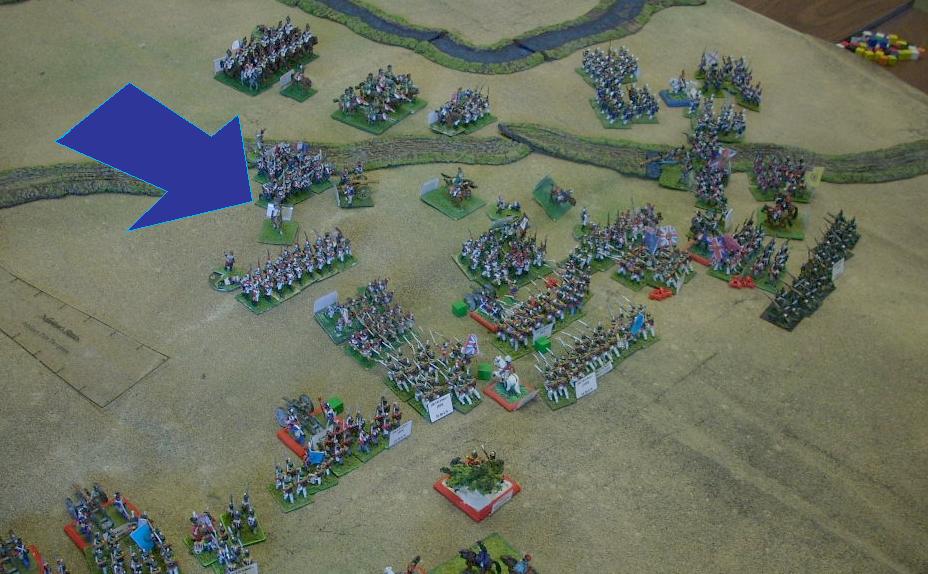
Marmont appears from Burgos with 37,000 French reinforcements in the form of I Corps. Uxbridge advances with courage and defiance, determined to slow Marmont's progress. In the center, Duenas has been set alight, causing the French defenders to flee out of it. The village would burn through the remainder of the day.
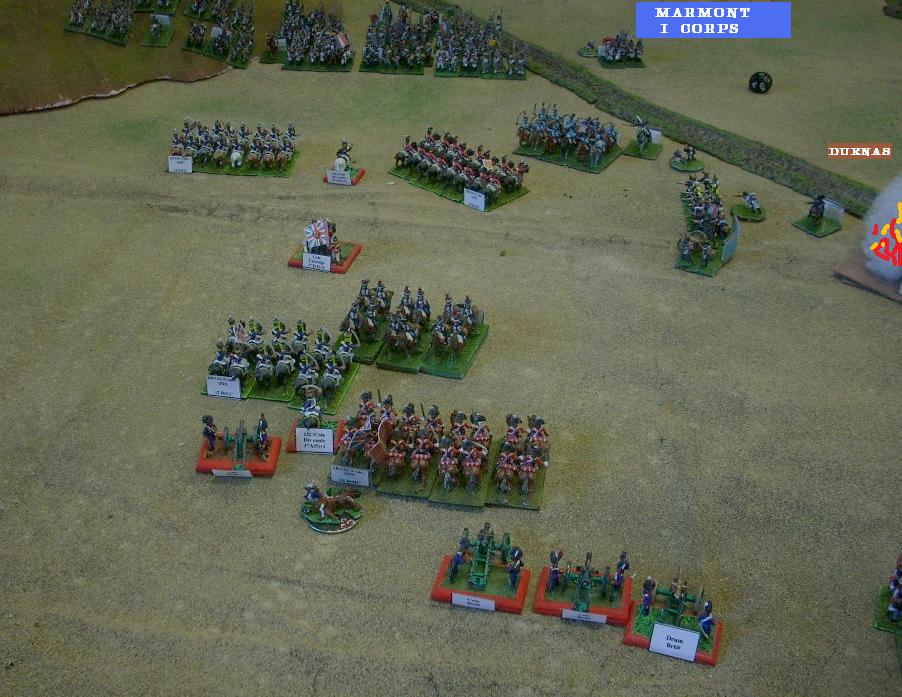
Uxbridge's effort are fairly futile, buying little time and proving very costly in horseflesh.
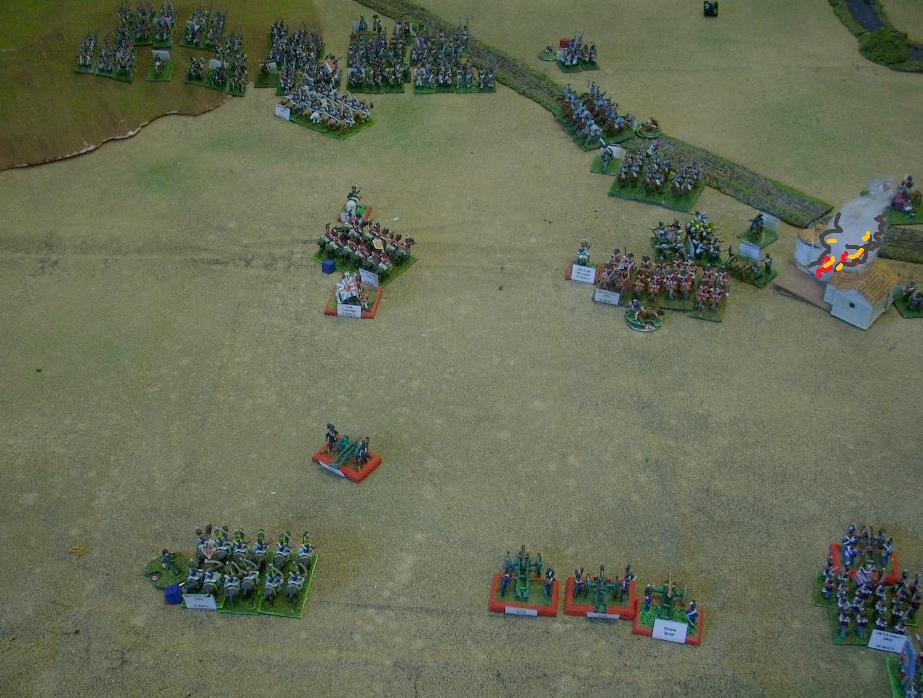
Wellington arrives with Hamilton's Corps and they march past the masses of routed troops from Cooke's corps that are not yet rallied. Abercromby and Cooke are engaged in a long range firefight with Kellerman and the initial plan is for Wellington to march across to the left flank to counter the threat from Marmont.
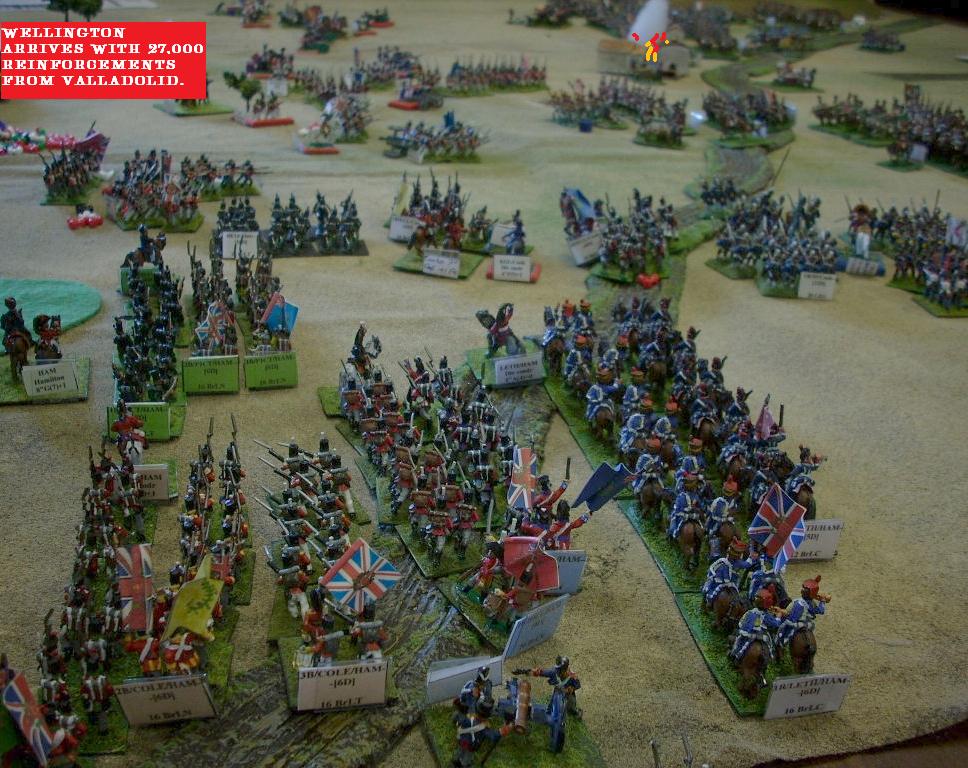
There is a general pause in the center, Marmont continues to roll forward while Abercromby and Cooke are content to hurt III Corps with artillery fire.
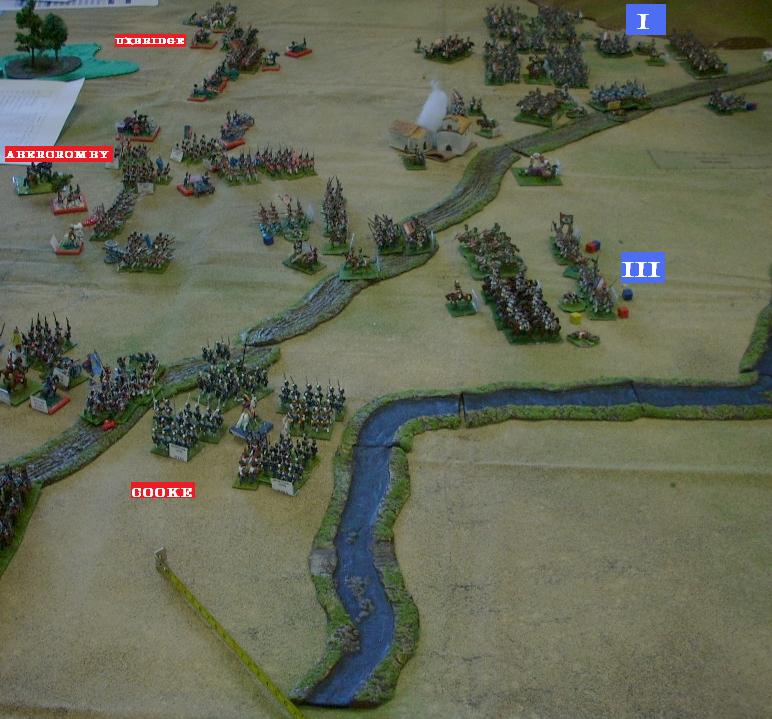
Abercromby finds his position compromised by Marmont and his left and right divisions stand back to back. Hamilton's progress toward the left flank is not going as quickly as either Wellington or Drummond would like.
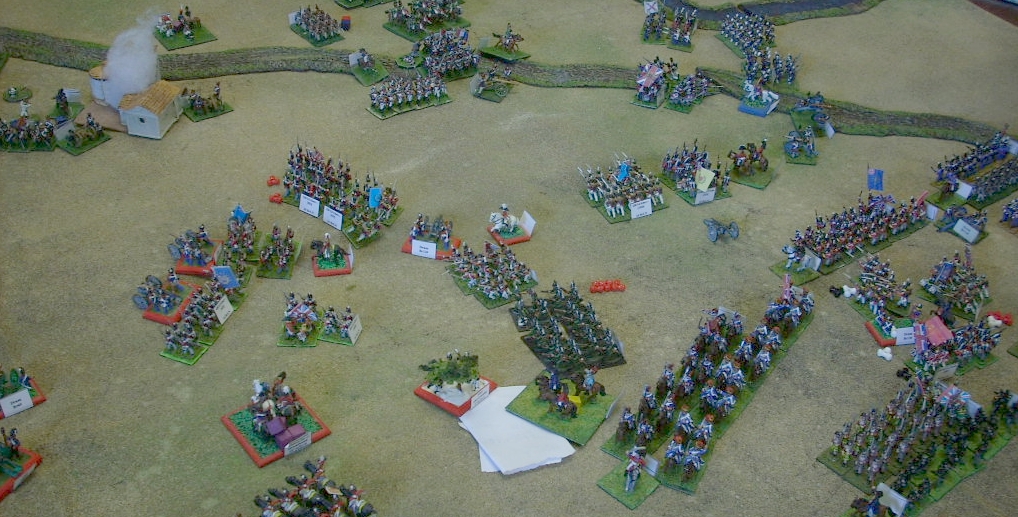
Uxbridge is certainly feeling the pressure as his ranks thin noticeably.
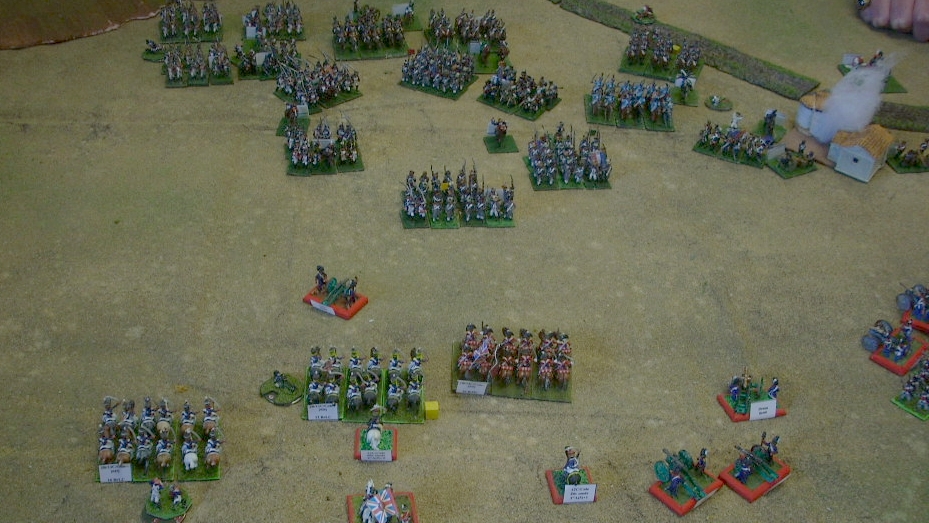
French cavalry attacks cut Uxbridge's cavalry corps off from the remainder of the army. Drummond and Wellington change plans suddenly. Hamilton will turn to the right and move against Kellerman on the French left. Abercromby will turn and throw up a defensive line on the left flank.
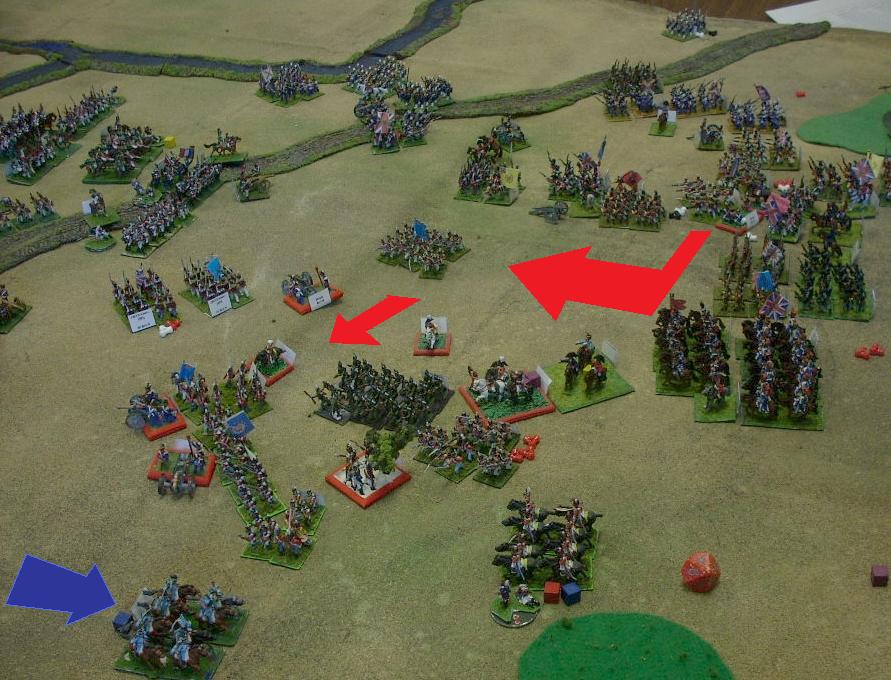
Abercromby's line forms just in time as Marmont's column complete their wheel and work to brush aside the last of Uxbridge's cavalry.
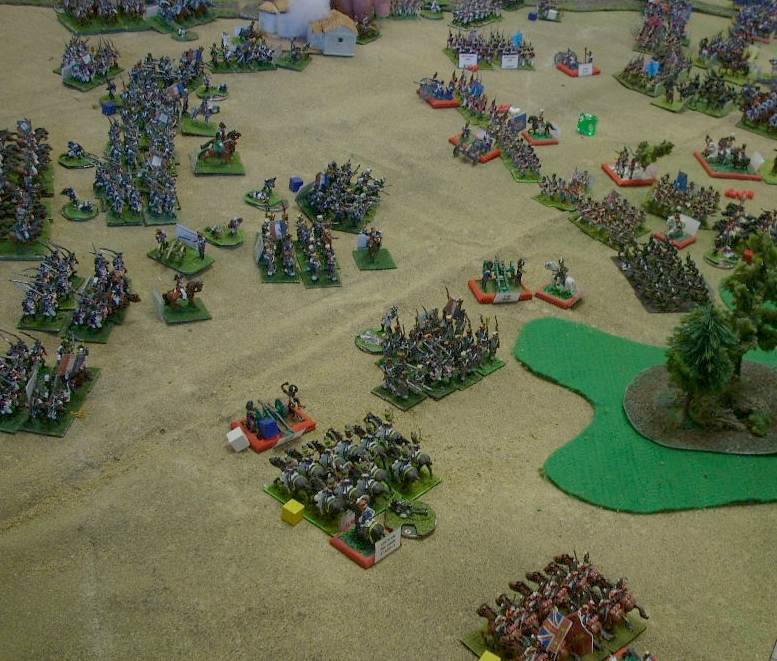
Hamilton's Corps moves into the positions earlier held by Cooke and Abercromby and proceed to conduct long range artillery duels with the veterans of Kellerman's Corps. Seven Portuguese brigades make up the right flank of this deep formation.
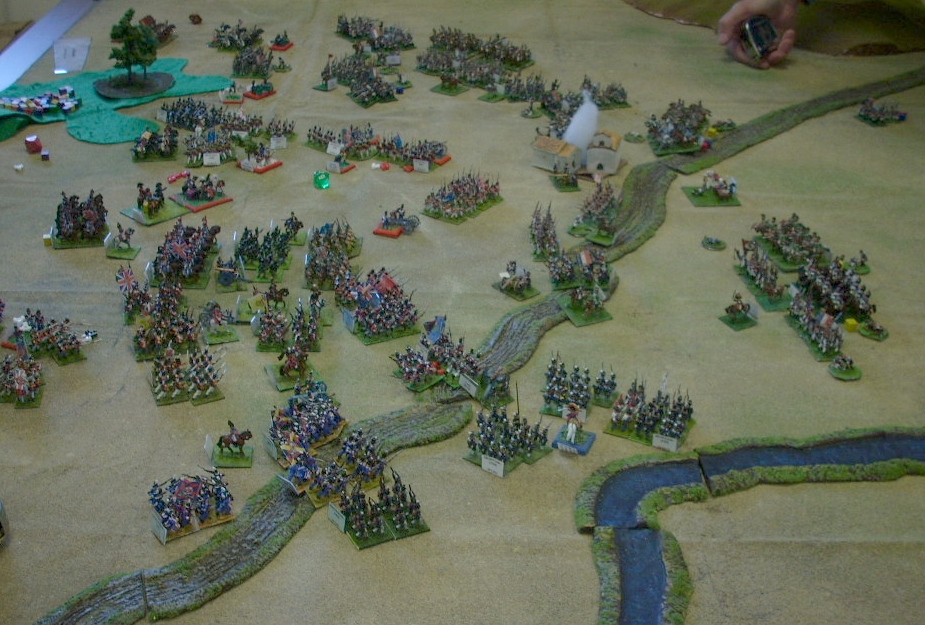
Cooke and Hamilton edge forward to exchange musketry with Kellerman.
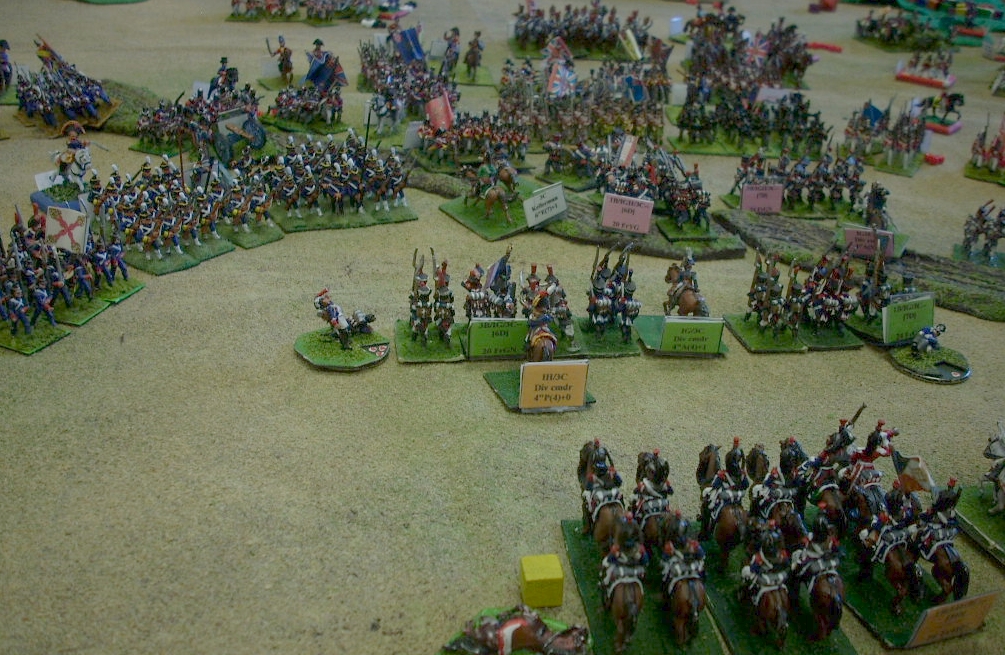
Following the last photo, Wellington would turn in the initiative for a double turn and launch an assault across the battlefield. An entire Portuguese divisions would be routed and sabred by the cuirassier but it would leave the French heavy cavalry a spent force. Various brigades on both sides would be routed and dispersed but at the end of it, Kellerman is sent reeling back to try forming yet another line. Abercromby's lines would advance against Marmont and enjoy some successes but they would be little enough and I Corps had enough columns to fill the gaps left in their lines. Also, with Uxbridge's corps destroyed, Marmont now enjoyed a decided cavalry superiority.
The British would be obliged to retreat back to Valladolid. Kellerman's Corps suffered horrendous casualties but elsewhere, the French are still fresh and strong. Meanwhile, for the British, Cooke and Uxbridge are exhausted. Abercromby too has little fight left in it. Hamilton is reasonably fresh and will be battle-ready by the next morning.